Great dreams of true dreamers are always transcended and they can feel the essence of their hard work and true motivation when the outcome finally is appreciated. Seqinglamu was also honored and speechless at the same time, when she was awarded with the prestigious award (best achiever of the year) in her graduation ceremony.
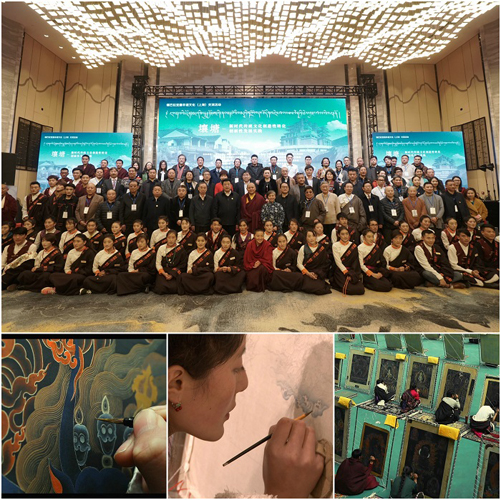
It was not just a mere achievement for her;it certified her as the master of her own soul and architect of her own fate as she was not among those who go with the flow like a dead fish. Seqinglamu used the art of meditation to feed her soul with the true colors of Thangka culture. Unlike others, who think that their future has been predestined and they are puppets in the hands of fate, Seqinglamu on the other hand gave expression to the thought of Buddha that “the only limits in the life are the ones you make for yourself”. This led her to a certain realization that everyone can carve out a career of their own choice if they are ready to shoulder the burden that comes with their choice. Jianyang Lezu Rinpoche is the one of best teachers who guided his students towards real path to find themselves by giving them different techniques and challenges gradually. He believes that every student has an ability to educate himself if they are provided with inner peace and proper facilities then.
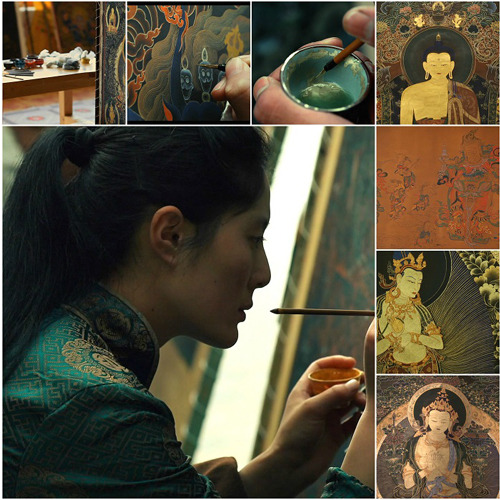
The roots of Buddhism had spread In India and China in 65 A.D when the missionaries travelled towards north to discover the new religion and by the trade routes of silk route through Central Asia respectively. Buddhism became the important culture of Tibetan as it was influenced by the rulers of Nepal; king song –tseen gam-po who married a Chinese Buddhist princess and later on he was converted to Buddhism too.As he converted to Buddhism he sent his chief minister to India to study the holy place of Buddhism in India. From there the culture of Tibetan was influenced when the old knowledge of Buddhism from India reached.
In Tibet, Buddhism brought forth a strange art which was actually influenced by the cultures of India, China, and Central Asia. This art was named as Thangka where a whole world of symbols came to life in sculpture and painting. The lotus, or "padma ", is widely used in the art and in the religious symbolism of Buddhism. Long regarded as a sacred plant, the lotus and its flower aptly symbolize life's fulfillment. With its roots in the earth, its stem in water, its blossom in the air, and blooming in the rays of the sun, the lotus thus symbolizes four elements. It is also a symbol of rebirth; its seeds pass from the air to the water and then into the earth where they germinate. It also symbolizes purity as well as Nirvana the spiritual goal of Buddhism.Lotus also determines the Compassion and the highest state of consciousness in Thangka art. Most of the Thangka paintings consist of lotus in the hands of Buddha.
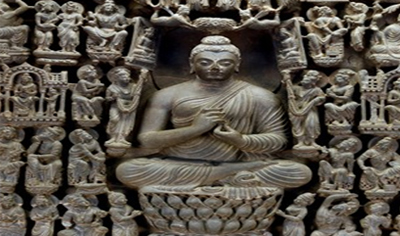
Jonang Thangka is the institute where the Tibetan Buddhism is preserved, restored, documented.Its mission is not just to teach the students about the painting culture of Buddhism but also gives them motivation to preserve and conserve the historical, philosophical and contemplative Tibetan literary works.Jonang foundation is equally promoting Tibetan Buddhist tradition through research and scholarship on national as well as international platforms.
Artist monks make spiritual preparations i.e fasting, before painting the thangkas or temple banners which are a special feature of Tibetan Buddhist art. Painted on silk or other fabrics, these banners usually contain a spiritual portrait of one or other of the saints and deities, and also many other figures and scenes, which tell the story of the central personality. Most of the Thangka have an inscription on its back. Thangka is present in the area where Buddhism flourished in Tibbet. Thangka is rich in symbolic and allusion, as this art is religious and strictly follows the guidelines of Buddha’s teaching.
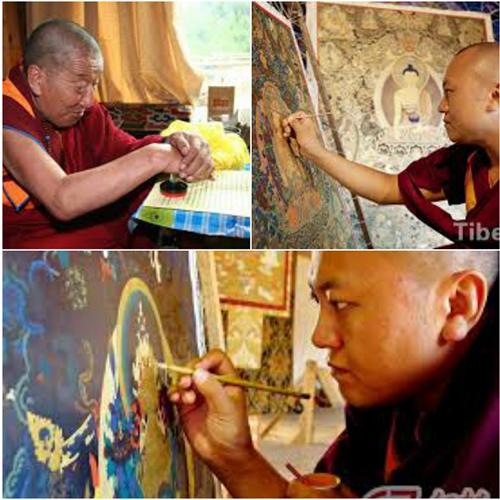
In the Institute of Jonang Thangka the students are enlightened with the true concept of real Thangka art.The students are provided with the following guidelines for The combination of relief with smudging, glimmering painting insertions and subtle color transitions in the background, to create radiant three-dimensional images, as though coming directly from the space of Light.
The “luminous nature” of the divinities is also projected by the artist by the introduction of various raised threads, beads, specially made attributes or details into the Thangkas’ surface. It is also worth noting that the “realistic” character of “real three-dimensionality” corresponds with the visual culture of their ancient times, where 3D thinking may be interpreted as a current stage of the artistic process of literal translation, objectification of the “invisible” into visible three-dimensional forms. In this respect, inclusion of volume into Thangkas is not a dim intuition of the impulses of the times, but a process precisely grasped by the Buddhist artist. It is interesting that the first glance on Eshe Gombo works grasps large, almost localized patches of color which form the nucleus of the Thangkas’ color balance. They are almost “forcing open” an uninformed consciousness; pull it with a “hook” of three-dimensionality and active color. However,further contemplation makes apparent the subtle fractal design of the surfaces, which creates multi-dimensionality, multi-layered quality of representation which leads the image away from 3d literalism. Such is the Thangka depicting Manjusr, where the radiance of the bodhisattva of Transcendent Wisdom is “woven” out of the finest threads and overplayed ornaments of translucent fabrics. This creates an impression of subtle waves of light streaming from the divinities. At the large thangka of Vajrasattva, the modulations of light-and-color factuality are noticeable especially in the execution of details and ornaments.
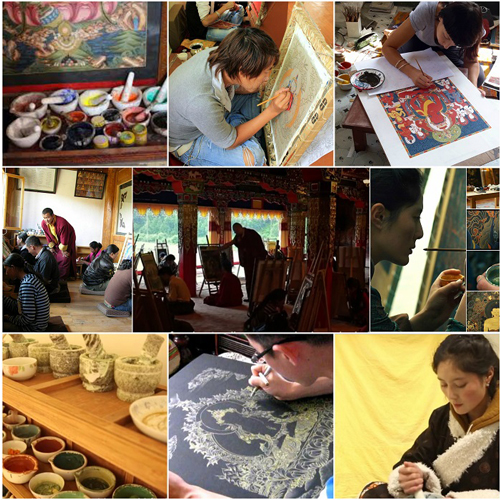
The institution of Jonang Thangka is rightly providing students with new paths to attain a successful life. This institute promotes the importance of meditation in Buddhism and how one can transform their thoughts on the piece of silk, by giving them proper knowledge of thangka techniques. It promotes the idea of accepting thangka as a career among students by allowing them to polish their creativity skills during the practice sessions.Seqinglamu is the biggest example for this as she realized the power of her inner self and make every other person stun by her paintings.Now she is ready to accept thangka as a career and is already excelling in it.She is a role model for all the new artists who want to achieve novel heights in cultural arts.
BON Cloud is playing a vital role in saving the intangible cultural heritage of Buddhism in China. It’s really an interesting platform for new generations to write, showcase their creative skills at the same platform.


